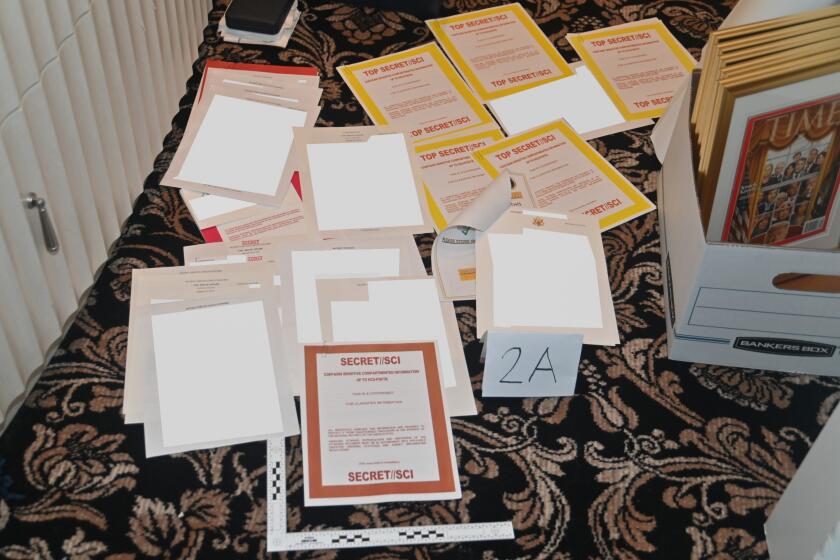Op-Ed: Did we learn anything from Proposition 13? Proposition 5 says no

California began an experiment 40 years ago called Proposition 13. The 1978 voter-passed initiative rolled back property tax rates and then capped annual increases at 2% a year. The question then became: Can a modern state provide infrastructure, education, healthcare and fight poverty while simultaneously starving the state coffers?
The answer was no. Property tax revenue dropped nearly 60%. K-12 education spending fell to some of the lowest levels in the nation. The state master plan for first-class higher education and infrastructure was left in tatters. The state has become so dependent on income taxes that it suffers from a volatile boom-and-bust budget cycle.
It’s hard to imagine wanting to make this worse, but those who put Proposition 5 on the November ballot would like to try. If passed, this measure would hand $1 billion to 4 million property owners who have already enjoyed the greatest benefits from Proposition 13. Renters get nothing. Recipients of government services, including students, Medi-Cal enrollees, and anyone who drives on a road or spends time in a state park, gets shortchanged.
Right now, thanks to Proposition 13, a property is assessed for taxation only when it changes hands. If Proposition 5 passes, homeowners over age 55 (plus about 100,000 with serious disabilities) would get to essentially transfer their lowered tax level to every future house they buy.
Proposition 5, if anything, could make prices shoot up.
The selling point, according to the real estate industry, is that older homeowners supposedly get locked into their properties, because they don’t want to trigger reassessment and face a hefty increase to their property tax bill. If they would just move somewhere, that would increase the inventory in California’s tightest housing markets.
This theory neglects the fact that older homeowners already get a special property tax dispensation if they move. Under current law (Propositions 60 and 90), when over-55 homeowners downsize to a cheaper house (in the same county or in 11 reciprocating counties), they can transfer the old tax bill to the new house. People typically downsize once their children move out, making them eligible for this one-time benefit.
Proposition 5 says that’s not enough. So it cuts property taxes for those buying a less expensive property and for those who buy a more expensive new home, their taxes only go up on the difference in price between the home they sold and the one they buy. Proposition 5 also lets them repeat this exercise indefinitely.
This won’t expand the housing supply. It won’t even lubricate the housing market because the state has already removed any disincentive to downsizing. Proposition 5, if anything, could make prices shoot up, as senior home buyers who are saving $1,000 a month on property taxes bid up their offers.
Figures from the California Budget Center show who truly benefits from this arrangement. Due to Proposition 5’s complicated formula, those selling the most expensive properties will reap far greater savings. For example, take two families who bought houses 20 years ago for $200,000. Both decide to move into $1.5 million condos. If the first family’s house is now worth $500,000, they would save $3,000 on their annual tax bill. If the second family’s home is worth $1.4 million, they would save a whopping $12,000 a year.
Enter the Fray: First takes on the news of the minute from L.A. Times Opinion »
Proposition 5 is a giveaway to older homeowners in expensive neighborhoods that will come at the expense of younger homeowners or ones from more modest areas. It’s a doubling down on an American aristocracy in the vein of President Trump’s tax cuts.
Why should anyone fear that deep-blue California might rubber-stamp such an outrageously unfair tax cut for the wealthy? Because the segment of the population helped most by Proposition 5 is the segment that votes. According to a Public Policy Institute of California report from June 2017, the turnout rate for voters under 25 was 27% lower than for those 65 and older in the last midterm election.
There are indications that opposition to Trump might drive younger voters to the polls in California this year. They may not fully understand Proposition 5, or the possibility of purchasing a home may seem so remote that they may not see how the initiative will affect them. Perhaps they’ll be swayed by the real estate industry’s arguments that this change will help out senior citizens, and reduce home prices.
They shouldn’t be fooled. Proposition 5 strips funding from state and local governments to subsidize the same fraction of homeowners who have enjoyed cheap property taxes for up to 40 years already. Those blessed with high incomes and wealth, who have seen their properties double and triple in value, are the last people who need large tax breaks.
David Dayen is a contributing writer to Opinion.
More to Read
A cure for the common opinion
Get thought-provoking perspectives with our weekly newsletter.
You may occasionally receive promotional content from the Los Angeles Times.






